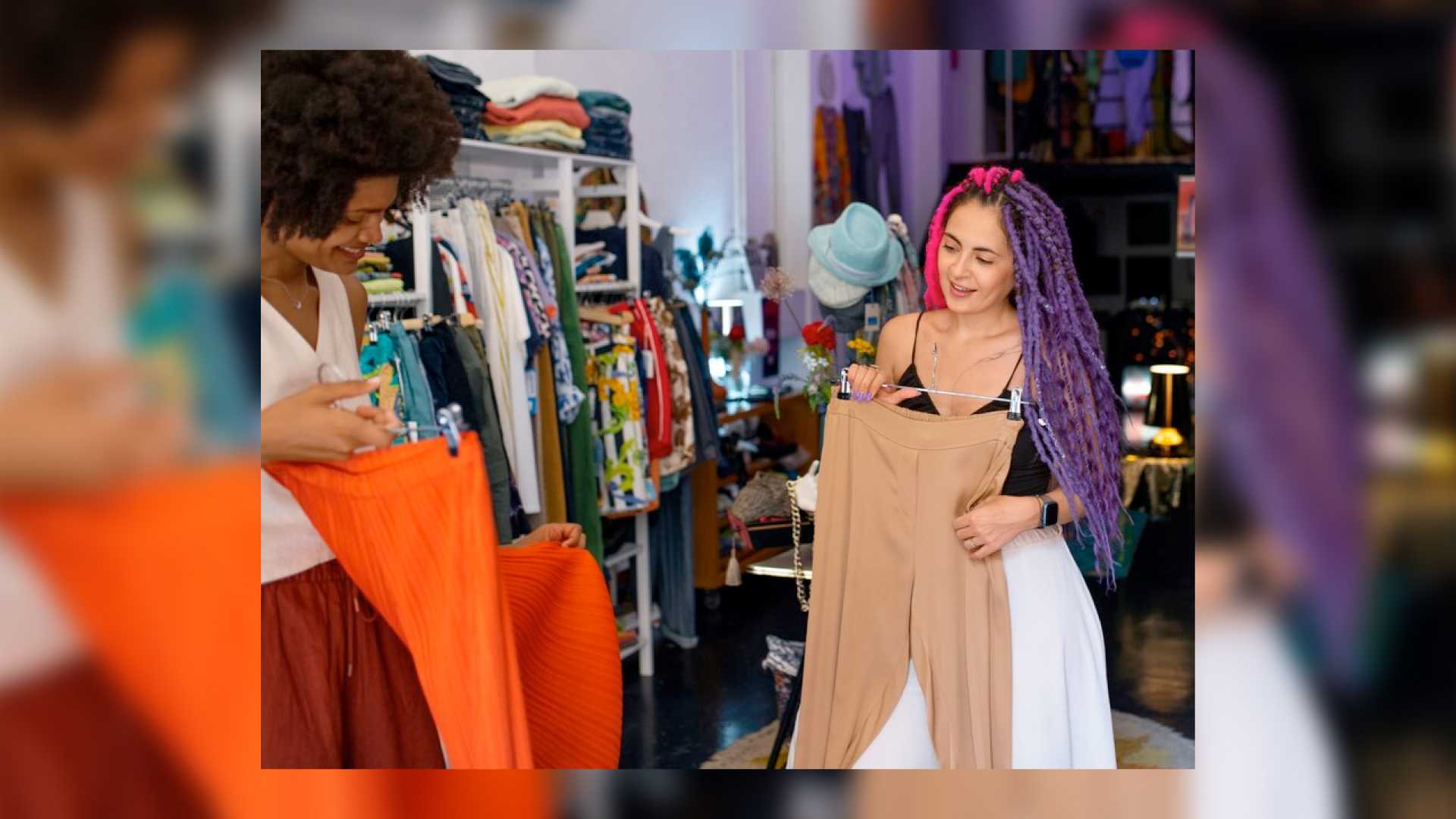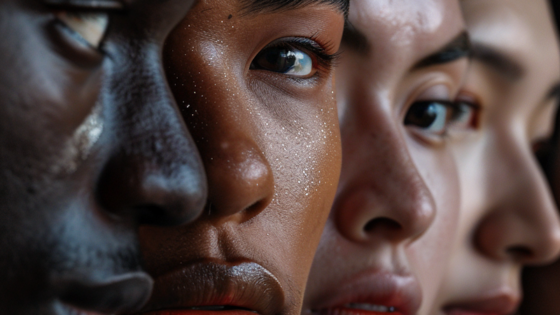on
BY SIMONE J. SMITH
“Oh my gosh, look at this jacket! It’s so ’80s, I love it!”
“And check out these funky sunglasses! They’re totally unique.”
In a world where fashion trends come and go like the seasons, there’s a new movement stirring up excitement and creativity on the streets: circular fashion. Circular fashion isn’t just about recycling old clothes; it’s a whole new way of thinking about style. It’s about: embracing sustainability, reducing waste, and reimagining the lifecycle of fashion. Circular fashion isn’t just about shopping; it’s also about getting hands-on and creative. From DIY projects to clothing repair workshops, people are finding joy in reviving old pieces and adding their personal touch.
On Sunday, May 5th, 2024, I (on behalf of the Toronto Caribbean Newspaper) made my way down to the Stackt Marketplace (28 Bathurst St., Toronto, ON) to attend yet another fashion fantastic event put on by Fashion Takes Action. Fashion Takes Action (FTA) is a non-profit organization (established in 2007) to advance sustainability in the entire fashion system through: education, awareness, research and collaboration. That means they work with the people who: make, sell, buy, wear, resell and dispose/recycle clothing! They achieve this through industry programs such as their: annual WEAR Conference, their work to advance circularity, our Employee Education workshops, and their Sustainable Fashion Toolkit.
In 2023 they hosted 30+ vendors in the ReMode Marketplace, featuring an array of businesses focused on: reuse, resale, repurposing, rental and repair. This year, they invited two agencies – Scadding Court and Progress Place – that offer community sewing and repair programs with support from the City of Toronto’s Community Reduce and Reuse Program, and they were on site at ReMode offering repairs to attendees including: hemming, sewing buttons, and mending seams!
I was able to visit their awesome selection of circular fashion businesses where vendors were found throughout the Studio & Lookout spaces. This year their ReMode Marketplace hosted: Nefarious Clothing, Meridian, City of Toronto, StylEthics, LI/NE, Dot & Bea, Diana Coatsworth Design, Cloud Girl Vintage, Absolute Rubbish, Original Genes, Biophilia Vintage, HAUNTS Fashion, Rosebud Studio, The Brides’ Project, rax, Pegasus Community Project, The Shared Bag, olio studio, ASHES, Claire Upcycled, Ardent Earth, Guru, Cassandra Moy, Waratah Avenue, Rent A Pleat, and Demascare!
What I learned during my time there was the popularity of circular fashion. I was reminded that the most sustainable piece of clothing is the one already in your closet…or in someone else’s. We wear 20% of the clothes we own, 80% of the time. So, if there are items that you know you won’t wear, or that don’t fit anymore, a clothing swap is the perfect way to share them with someone else and find new pieces for yourself.
Last year they swapped 1,200 items of clothing. This resulted in 600 kg of diverted textiles from landfills, and 1,600 kg of co2 saved.
What is making circular fashion such a hit? Well, for starters, it’s all about the thrill of the hunt. There’s something exhilarating about discovering hidden gems in thrift stores, or swapping clothes with friends. It’s like uncovering treasures and giving them new life. Here is how Remode’s clothing swap works:
DROP OFF
I did a spring closet clean out? I found some clothes that were in good (used) condition, but just no longer matched my style (or size). I brought 10 pieces.
COLLECT A TICKET
For every piece they accepted into the swap I received a ticket to ‘shop the swap’ – 10 pieces in, 10 new-to-me pieces out!
GO SHOPPING
The fun part; exploring the racks of items at ReMode and using my tickets to add some great new finds to my spring wardrobe!
ReMode is where you come to learn how to keep your clothes in use for as long as possible through the 7 R’s of Fashion, which I learned are: reduce, reuse, resale, repurpose, repair, rent, and recycle. There is a sense of community that comes with circular fashion. Whether you’re attending a clothing swap, or sharing styling tips online, it’s a chance to connect with like-minded individuals and share your passion for sustainability. The Marketplace shines the light on the #nonewclothes movement, with vendors focused on reuse, resale, repurposing, rental and repair.
During the day, they had talks that featured industry experts and influencers throughout the day to help guests learn more about how to reduce their fashion footprint through what they buy and how to care for their clothes.
So, if you’re looking to add a little excitement to your wardrobe and join a movement that’s as stylish as it is sustainable, why not give circular fashion a spin? After all, the circle of style is always evolving, and there’s never been a better time to jump on board.
Stay in the loop with exclusive news, stories, and insights—delivered straight to your inbox. No fluff, just real content that matters. Sign up today!
Morning Mantra
We, as humans are guaranteed certain things in life: stressors, taxes, bills and death are the first thoughts that pop to mind. It is not uncommon that many people find a hard time dealing with these daily life stressors, and at times will find themselves losing control over their lives. Simone Jennifer Smith’s great passion is using the gifts that have been given to her, to help educate her clients on how to live meaningful lives. The Hear to Help Team consists of powerfully motivated individuals, who like Simone, see that there is a need in this world; a need for real connection. As the founder and Director of Hear 2 Help, Simone leads a team that goes out into the community day to day, servicing families with their educational, legal and mental health needs.Her dedication shows in her Toronto Caribbean newspaper articles, and in her role as a host on the TCN TV Network.













